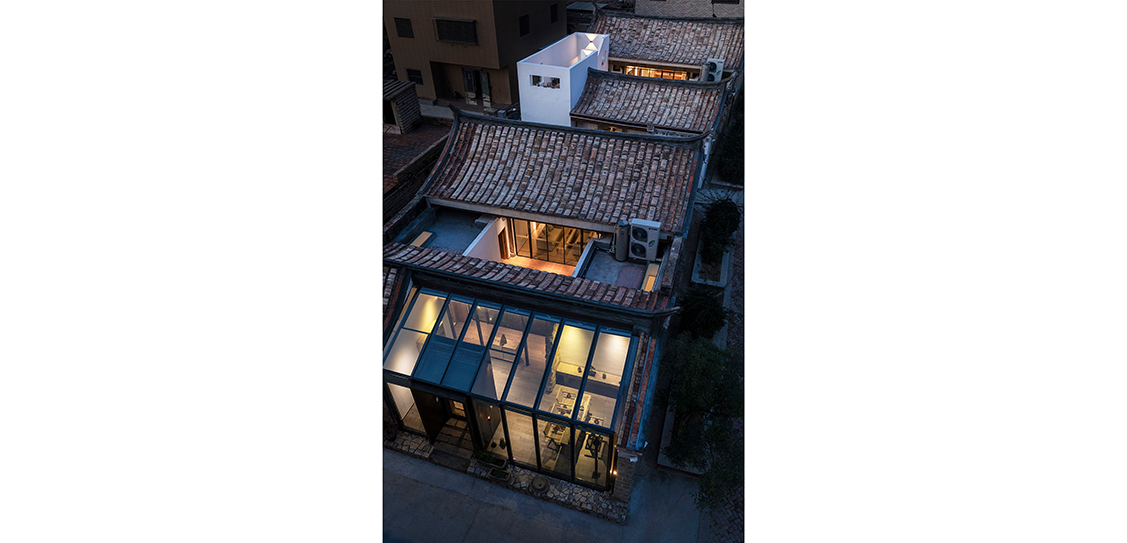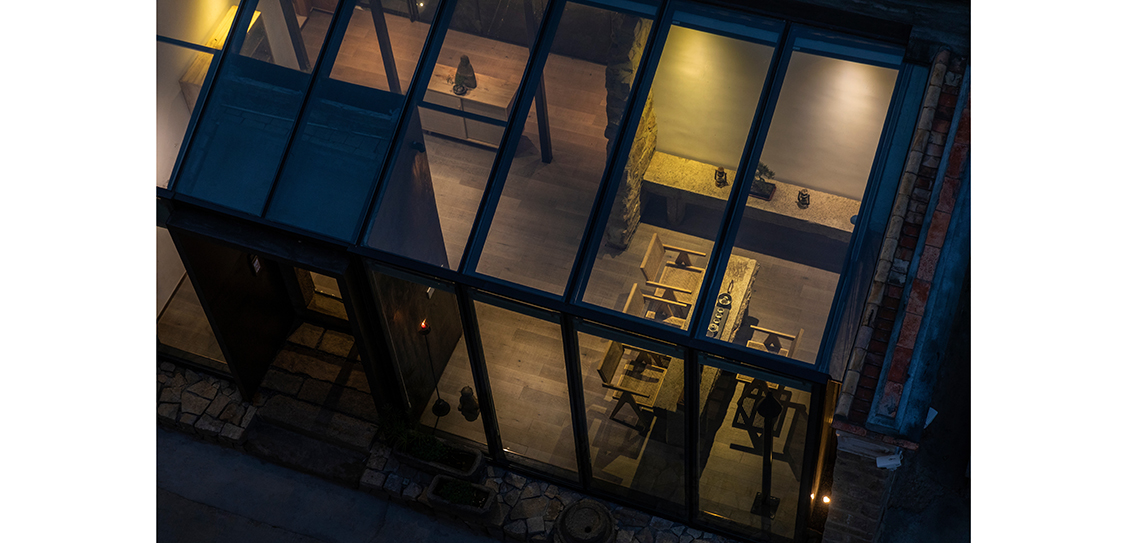The Xiangyu Xiangyuan B&B project is located in Dazhai Village in the Xiang'an District, which has a history of more than 800 years and sits adjacent to mountains and seas, on flat terrain.
It comprises two parts, the old and the new. The old part is a traditional house with a century-old history that has been carefully transformed into the core space of the entire building. The new part is a contemporary architectural style composed of steel, glass, and brick. The new and old parts collide and blend, revealing the designer's thoughts on the transformation of rural old buildings and the regeneration of abandoned resources.
Southern Fujian culture is a mix of traditional Chinese farming and foreign influences. Its richness and diversity were reflected in the homestay’s architecture by implementing very distinctive regional characteristics.
For example, the main structures of the buildings are mostly Chinese traditional wooden frames, with building facades made of red bricks and red tiles, and “Yingshan” style roofs (a traditional Chinese roof where both ends of the roof curve slightly upward, using light and flexible "swallowtail" methods).
These original traditional buildings have collapsed to varying degrees. The collapsed part of building 1 is the first half of the building and the west side room of the atrium. The cornerstone on the west side is irregular. The designer used a compromise design in the collapsed area. A simple geometric building was built at the collapsed place to form a fusion with traditional architecture. The simple and pure geometry endows the old building with enough support and also highlights the readability of the traditional building.
The collapsed location of building 2 is the hall and the front half of the kitchen. The original wooden roof frame is almost collapsed, and there is a nearly collapsed gate. The two side rooms in the middle have also collapsed. The designer used steel structures in the hall and the left room to support the original wooden structure. The facade adopts a large area of floor-to-ceiling windows to meet the light quality requirements of the indoor space. The traditional roof is in sharp contrast with the transparent glass, which gives the traditional house a lighter expression.
Building 3 is mainly constructed of strips and blocks of stone, so it is still very stable after one hundred years, revealing no serious damage. It has been evaluated by professional organisations and meets the reliability requirements of current national standards, but it still needs to be reinforced to avoid future troubles. To address that issue, the designer adopted an inner steel structure method for partial treatment and repair.
In terms of interior design, the designer draws upon a modern interpretation of traditional Chinese architectural materials at the core, and carries out the interior design of three century-old buildings from the three directions of wood, stone, and porcelain.
Wood, throughout the history of human construction, was a renewable material obtained from a wide range of sources. Wood is the most widely used material in the Xiangyu Xiangyuan B&B space for various presentations such as furniture, flooring, and installations.
As a natural construction material, stone has solid and natural characteristics. The overall space atmosphere of Xiangyu Xiangyuan B&B is highlighted through the redesign and application of stone. Porcelain is the most low key material in the entire space, hidden within a modern form, expressing respect for the century-old buildings.



